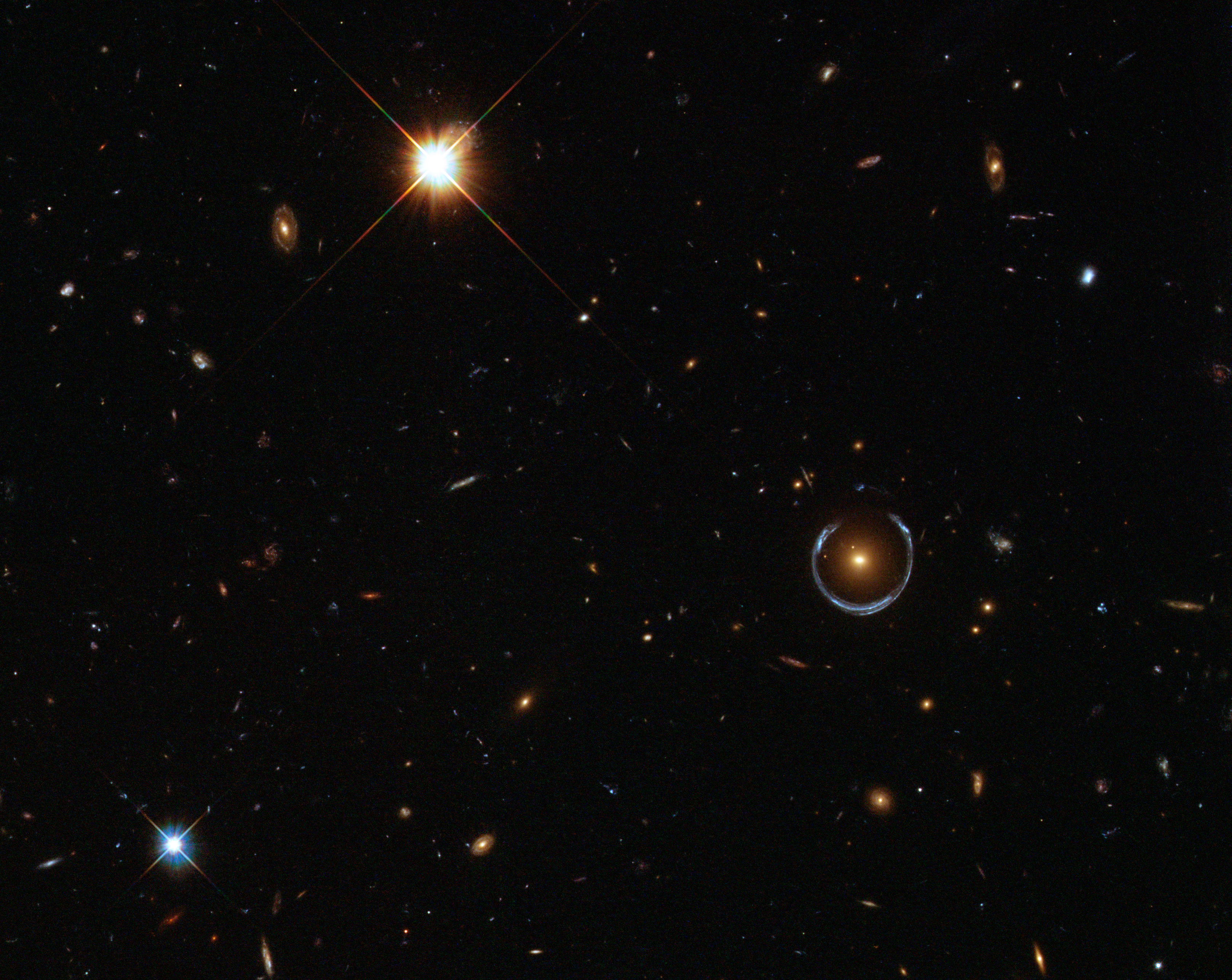This semester I am the TA for the numerical techniques class offered by my department (as in I am the only TA). For the class the students have projects where they demonstrate some numerical technique by solving a somewhat more advanced problem. One of my students had a project where he was trying to show gravitational lensing. He loaded images taken by Hubble into Matlab and then calculated how the image would be warped by a black hole between us and the target. With a little help from me, and a lot of work on his part, he managed to make a short video of what the Andromeda Galaxy would look like if a black hole passed between us and the galaxy.
The strength of the lensing is greatly distorted (I think he assumed a black hole of > 10^12 M_sun) in order to emphasize the effect. Still it looks pretty cool.
Below are some real pictures of gravitational lensing for comparison.
 |
| Source: APOD |
 |
| Source: Hubblesite.org |
That's a pretty good project for an undergrad. Is this numerical techniques class similar to the computational labs on Maple and Mathematica that we did at BYU?
ReplyDeleteThe class would be equivalent to Physics 430 (and a few parts of 330). It is based entirely in Matlab (just for practical purposes). We assume that the students have a working knowledge of Matlab before they take the class, whereas the computational labs at BYU are used to teach both Maple and Matlab, in addition to the normal numerical techniques.
ReplyDelete